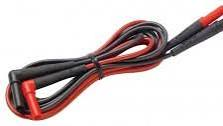- Joined
- May 28, 2019
- Messages
- 10,199
- Reaction score
- 7,129
NVIDIA is following up on reports from multiple RTX 4090 owners who claim their 16-pin power adapters melted while gaming.
See full article...
See full article...

I saw in a few reviews that if you plan to leave the card stock you just use 3x 8-pin connectors for 450W mode, but if you use 4x connectors the card can be used in 600W mode for overclocking....a number of people are wondering if it matters whether or not to use 3 or all 4 pin connectors.
Dang, if the native 16 pin plug can't be bent either, they should make it a 90 degree connector stock. Not sure I could fit a 4090 in my fractal Define 7 XL and still have 35mm of room before bending, and this case is pretty wide..I saw in a few reviews that if you plan to leave the card stock you just use 3x 8-pin connectors for 450W mode, but if you use 4x connectors the card can be used in 600W mode for overclocking.
I dunno about nVidia's custom smart adapter, but apparently the ATX 3.0 16-pin adapter should NOT be bent: https://cablemod.com/12vhpwr/
Maybe the nVidia smart/active adapter is the same way.
Realistically is like 60mm, since you need 35mm before it can start to be bent.Dang, if the native 16 pin plug can't be bent either, they should make it a 90 degree connector stock. Not sure I could fit a 4090 in my fractal Define 7 XL and still have 35mm of room before bending, and this case is pretty wide..
The uber Galax 4090, yet to come out, is rumored to have that.My guess - the fix for this will be moving to dual 16-pin adapters.
A growing amount of RTX 4090 owners have been posting images of their cards and adapters on the internet leading to more suspicions about the 12VHPWR adapters.
See full article...
Just posted a new story on it this morning.Update:

Can't have a 1000W VBIOS without them!The uber Galax 4090, yet to come out, is rumored to have that.
